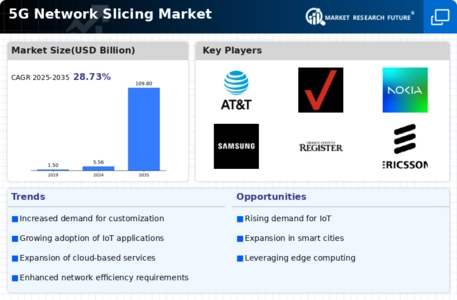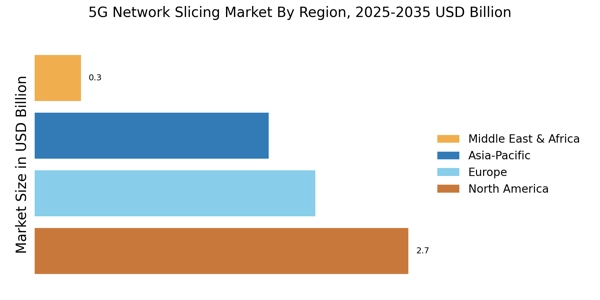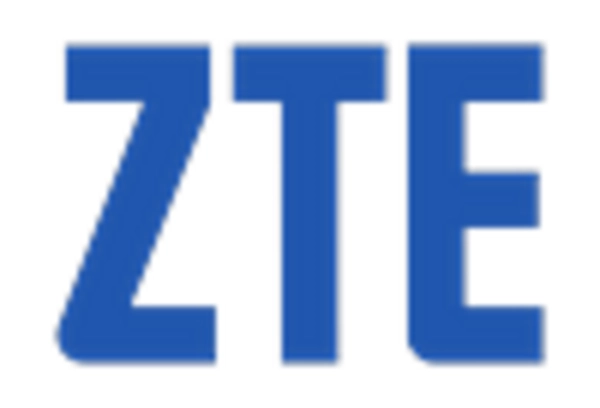The 5G Network Slicing Market is currently characterized by a dynamic competitive landscape, driven by the increasing demand for tailored network solutions across various sectors. Major players such as Ericsson (SE), Nokia (FI), and Huawei (CN) are at the forefront, each adopting distinct strategies to enhance their market positioning. Ericsson (SE) focuses on innovation and technological advancements, particularly in network management and orchestration, which are crucial for effective network slicing. Meanwhile, Nokia (FI) emphasizes partnerships and collaborations, aiming to integrate its solutions with various industry players to expand its reach. Huawei (CN), on the other hand, leverages its extensive R&D capabilities to offer comprehensive end-to-end solutions, thereby solidifying its competitive edge. Collectively, these strategies contribute to a competitive environment that is increasingly centered around technological differentiation and strategic partnerships.
In terms of business tactics, companies are localizing manufacturing and optimizing supply chains to enhance operational efficiency and responsiveness to market demands. The competitive structure of the 5G Network Slicing Market appears moderately fragmented, with several key players exerting influence. This fragmentation allows for a diverse range of solutions and innovations, fostering a competitive atmosphere where companies must continuously adapt to maintain their market share.
In August 2025, Ericsson (SE) announced a strategic partnership with a leading cloud service provider to enhance its network slicing capabilities. This collaboration aims to integrate cloud-native technologies into Ericsson's offerings, thereby enabling more flexible and scalable network solutions. The significance of this move lies in its potential to streamline operations for enterprises, allowing them to deploy customized network slices that meet specific business needs, thus enhancing customer satisfaction and loyalty.
In September 2025, Nokia (FI) launched a new suite of network slicing tools designed to facilitate the deployment of private 5G networks. This initiative is particularly relevant for industries such as manufacturing and logistics, where tailored connectivity solutions are essential. The strategic importance of this launch is underscored by the growing trend towards digital transformation in these sectors, positioning Nokia as a key player in enabling businesses to leverage 5G technology effectively.
In October 2025, Huawei (CN) unveiled its latest advancements in AI-driven network slicing, showcasing its commitment to integrating artificial intelligence into network management. This development is crucial as it allows for real-time optimization of network resources, enhancing performance and reliability. The strategic implications of this innovation suggest that Huawei is not only focusing on immediate market needs but is also preparing for future demands in an increasingly digitalized world.
As of October 2025, current competitive trends in the 5G Network Slicing Market are heavily influenced by digitalization, sustainability, and the integration of AI technologies. Strategic alliances are becoming increasingly vital, as companies recognize the need to collaborate to enhance their technological capabilities and market reach. Looking ahead, competitive differentiation is likely to evolve from traditional price-based competition towards a focus on innovation, advanced technology, and supply chain reliability, indicating a shift in how companies will position themselves in this rapidly changing landscape.


















Leave a Comment